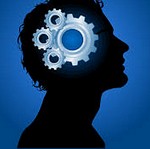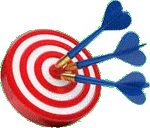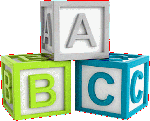Matching the Bowler and the Sport of Bowling
Bowling is the most popular participation sport in the world. The game is a simple game: Roll a ball down a 42″ wide path that is 60′ long, and knock over some bowling pins. Still, bowling may be based on the most challenging sport at the same time. It is based on the ever-changing physics of that path (the bowling lane) that has lane conditioner (oil) spread across some portions of the lane in various patterns. The bowling ball comes in a wide variety of weights, coverstocks (the portion of the balls that come in contact with the lane), that pick up portions of the conditioner leaving the lane pattern tattered, and spotty. Portions of the conditioner are left on the ball, and still other portions of the oil is carried down the lane and spattered on other portions of the lane. In addition to all that, the bowler must deliver the ball down the lane at a speed and rotation that drives into specific portions of the lane at a specific angle. The bowler has to select a ball that is best suited for the task at hand, matching the lane conditions and the bowler’s speed, rotation and angle that is effective.
This discussion focuses on the bowler.
Technique
 When we compare bowler performances, we often say that one has a better “style” than the other. In essence we mean better technique, and by technique we mean how they implement the sequence of movements used to perform the delivery of a bowling ball.
When we compare bowler performances, we often say that one has a better “style” than the other. In essence we mean better technique, and by technique we mean how they implement the sequence of movements used to perform the delivery of a bowling ball.
Apart from minor differences, good bowlers understand their equipment and lane conditions. They use techniques based on the best use of principles that control human movement.
Fine tuned movements that you see these world-class bowlers use do not happen by chance.
Bowlers unwilling to learn from specific studies find it more difficult to advance their game. Secondly, those unwilling to acknowledge identified flaws introduced into their game, or unwilling to apply techniques identified by those who have learned the hard lessons, will surely find their limitations.
Things to Think About
 Often overlooked components affecting performance occur prior to bowling. Athletes would find it difficult to expect peak performance if they are not physically or mentally fit.
Often overlooked components affecting performance occur prior to bowling. Athletes would find it difficult to expect peak performance if they are not physically or mentally fit.
You should not expect to perform well if you are hungry or over-filled, or have poor nutritional habits. If you are ill, injured, or not physically fit, it may be a prudent decision to consider correcting areas that hold you back from doing well in your sport.
It is virtually impossible for any athlete to reach world-class performance without accepting the insights from others who know why it’s better to perform each movement one way rather than another. Along with a coach, embracing a willingness to learn; adding your talent and discipline, you’ll be able to enhance your bowling technique and performance.
Consistency Comes First
 A good score, a high average, and a win in bowling does not a good bowler make. Most bowlers, even those having higher averages, use flawed technique. To do your best, why not determine how to minimize your flaws?
A good score, a high average, and a win in bowling does not a good bowler make. Most bowlers, even those having higher averages, use flawed technique. To do your best, why not determine how to minimize your flaws?
Many bowlers want to focus on scores, and while that is a worthy objective, it is not be the place to start. Skilled coaches recognize inconsistencies in a bowler’s game. Listening and correcting flaws, and building consistency are more worthy objectives. Without consistency, it matters little compared with any other aspect of your game.
When there are troubling issues outside of your sport, you may be faced with carrying those burdens into your game. If you face a tough competitor or even what you perceive as an easy competitor, your mental condition can affect your performance.
Virtually all professional athletes refer to their coaches. To not utilize an educated coach’s eye would be foolish. Most casual and league bowlers tend to do things on their own, thinking that they simply don’t have the athletic skill necessary to be good bowlers. Some who have bowled for years avoid seeking inputs from a coach either because they are embarrassed, threatened or think they know better than the coach. The truth of the matter is all professional sports; football, basketball, hockey, skiing, golfers, and bowlers refer to their coaches. It is only good sense to utilize the tools available to them.
Most flawed bowlers often compensate for one flaw using another flawed component of their game. By forcing, pausing, exaggerating, bending their elbows, hopping during their approach and other components of their bowling in order to get to a near correct release point, or by thrashing the pins about hoping for secondary action of the pins most often ends in a less than satisfying resultant average. It isn’t a wise alternative, stresses your body, and simply looks like you really are not a bowler, but only a performer.
One fault can lead to another
 It is an axiom of life that one key fault can cause two or three other faults. As an example, forcefully pulling (muscling) the ball down from the top of the backswing may be corrected anywhere from their stance to their footwork. Identifying the root flaw and selecting an optimum response takes an educated coach’s eye, and a bowler’s willing heart.
It is an axiom of life that one key fault can cause two or three other faults. As an example, forcefully pulling (muscling) the ball down from the top of the backswing may be corrected anywhere from their stance to their footwork. Identifying the root flaw and selecting an optimum response takes an educated coach’s eye, and a bowler’s willing heart.
Embrace the basics. They will serve you well.
 Even many high-average bowlers either believe they know their game well enough to not require a coach or they identify their bowling skill superior to the coach. When you think you are at the end, you probably are.
Even many high-average bowlers either believe they know their game well enough to not require a coach or they identify their bowling skill superior to the coach. When you think you are at the end, you probably are.
Those bowlers wise enough to recognize the wisdom of learning how to improve their game, also know they should should begin with a reviewing their game before they bowl.
Never Stop Learning
 It is strange that every sport relies heavily on the trained eye of a coach … except in bowling. Bowlers tend to rely on their perceived ability to self-fix whatever is holding their performance down, and oftentimes resent outside inputs that can enhance their game. Utilizing the trained eye of a coach certified to identify each component of your bowling is to your advantage. A certified coach is your partner in achieving your objectives, your goals and identifying how to turn around your game when you need to find answers about your game. Your coach is not necessarily a better bowler, but someone trained to identify the source of whatever is holding your game down. NEVER STOP LEARNING, and recognize the benefit of seeking a coach who can identify weaknesses and generate improvements in your performance.
It is strange that every sport relies heavily on the trained eye of a coach … except in bowling. Bowlers tend to rely on their perceived ability to self-fix whatever is holding their performance down, and oftentimes resent outside inputs that can enhance their game. Utilizing the trained eye of a coach certified to identify each component of your bowling is to your advantage. A certified coach is your partner in achieving your objectives, your goals and identifying how to turn around your game when you need to find answers about your game. Your coach is not necessarily a better bowler, but someone trained to identify the source of whatever is holding your game down. NEVER STOP LEARNING, and recognize the benefit of seeking a coach who can identify weaknesses and generate improvements in your performance.
A vigorous walk will do more good for an person than all the medicine and psychology in the world.
The world wasn’t formed in a day, and neither were we. Set small goals and build upon them.
Exercise should be regarded as a tribute to the heart.
![]()